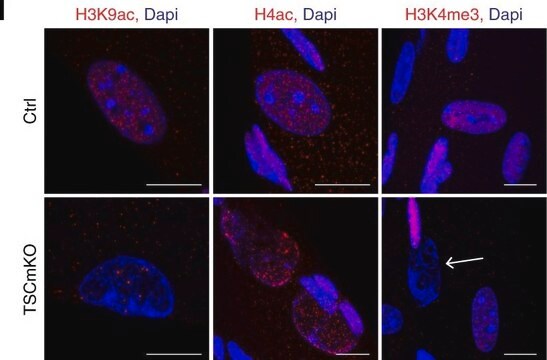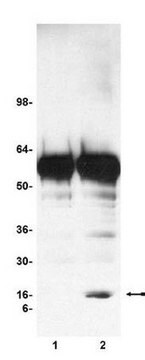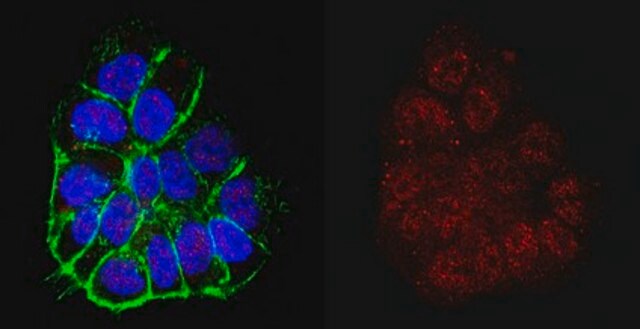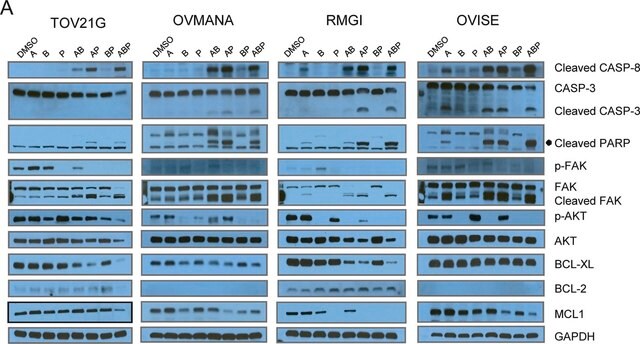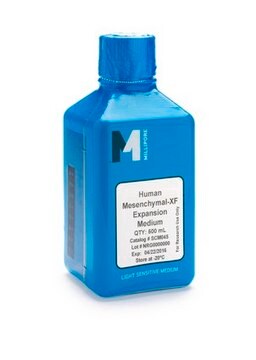17-229
Acetyl-Histone H4 Immunoprecipitation (ChIP) Assay Kit
Acetyl-Histone H4 Immunoprecipitation (ChIP) Assay Kit used to immunoprecipitate transcriptionally active chromatin from mammalian cells using anti-Acetyl-Histone H4, ChIP grade rabbit antiserum.
Se connecterpour consulter vos tarifs contractuels et ceux de votre entreprise/organisme
About This Item
Code UNSPSC :
12161503
eCl@ss :
32161000
Nomenclature NACRES :
NA.52
Produits recommandés
Niveau de qualité
Fabricant/nom de marque
Upstate®
Technique(s)
immunoprecipitation (IP): suitable
Numéro d'accès NCBI
Numéro d'accès UniProt
Conditions d'expédition
dry ice
Description générale
For use to immunoprecipitate transcriptionally active chromatin from mammalian cells using anti-Acetyl-Histone H4, ChIP grade rabbit antiserum. Detection of the gene or promoter of interest in immunoprecipitated chromatin must be empirically determined by the researcher using quantitative PCR or Southern slot-blot analysis, using promotor specific primers or probe.
Application
Acetyl-Histone H4 Immunoprecipitation (ChIP) Assay Kit used to immunoprecipitate transcriptionally active chromatin from mammalian cells using anti-Acetyl-Histone H4, ChIP grade rabbit antiserum.
Conditionnement
Kit capacity: 22 assays
Composants
Anti-acetyl-Histone H4 (Cat.# 06-866)
Protein A agarose/Salmon Sperm DNA (Cat.# 16-157)
All necessary buffers
Protein A agarose/Salmon Sperm DNA (Cat.# 16-157)
All necessary buffers
Informations légales
UPSTATE is a registered trademark of Merck KGaA, Darmstadt, Germany
Clause de non-responsabilité
Unless otherwise stated in our catalog or other company documentation accompanying the product(s), our products are intended for research use only and are not to be used for any other purpose, which includes but is not limited to, unauthorized commercial uses, in vitro diagnostic uses, ex vivo or in vivo therapeutic uses or any type of consumption or application to humans or animals.
Mention d'avertissement
Warning
Mentions de danger
Conseils de prudence
Classification des risques
Aquatic Chronic 3 - Eye Irrit. 2
Code de la classe de stockage
10 - Combustible liquids
Certificats d'analyse (COA)
Recherchez un Certificats d'analyse (COA) en saisissant le numéro de lot du produit. Les numéros de lot figurent sur l'étiquette du produit après les mots "Lot" ou "Batch".
Déjà en possession de ce produit ?
Retrouvez la documentation relative aux produits que vous avez récemment achetés dans la Bibliothèque de documents.
Guocheng He et al.
Molecular and cellular biology, 22(9), 2965-2973 (2002-04-10)
Repression of human immunodeficiency virus type 1 (HIV-1) transcription may contribute to the establishment or maintenance of proviral quiescence in infected CD4(+) cells. The host factors YY1 and LSF cooperatively recruit histone deacetylase 1 (HDAC1) to the HIV-1 long terminal
Hui Liu et al.
Blood, 104(8), 2505-2513 (2004-07-01)
Cyclin D1 expression is deregulated by chromosome translocation in mantle cell lymphoma and a subset of multiple myeloma. The molecular mechanisms involved in long-distance gene deregulation remain obscure, although changes in acetylated histones and methylated CpG dinucleotides may be important.
Shaojing Chang et al.
Journal of immunology (Baltimore, Md. : 1950), 181(12), 8372-8381 (2008-12-04)
Forming and removing epigenetic histone marks at gene loci are central processes in differentiation. Here, we explored mechanisms establishing long-range H4 acetylation marks at the Ifng locus during Th1 lineage commitment. In Th0 cells, histone deacetylase (HDAC)-Sin3A complexes recruited to
Lata Balakrishnan et al.
Journal of molecular biology, 365(1), 18-30 (2006-10-24)
SV40 chromosomes undergoing transcription operationally defined by the presence of RNA polymerase II (RNAPII) were immune-selected with antibody to RNAPII and subjected to secondary chromatin immunoprecipitation with antibodies to hyperacetylated or unacetylated H4 or H3. Immune selection fragmentation and immunoprecipitation
Melker Göransson et al.
International journal of cancer, 115(4), 556-560 (2005-02-03)
The myxoid/round cell liposarcoma oncogene FUS-DDIT3 is the result of a translocation derived gene fusion between the splicing factor FUS and DDIT3. In order to investigate the downstream targets of DDIT3, and the transforming effects of the FUS-DDIT3 fusion protein
Notre équipe de scientifiques dispose d'une expérience dans tous les secteurs de la recherche, notamment en sciences de la vie, science des matériaux, synthèse chimique, chromatographie, analyse et dans de nombreux autres domaines..
Contacter notre Service technique